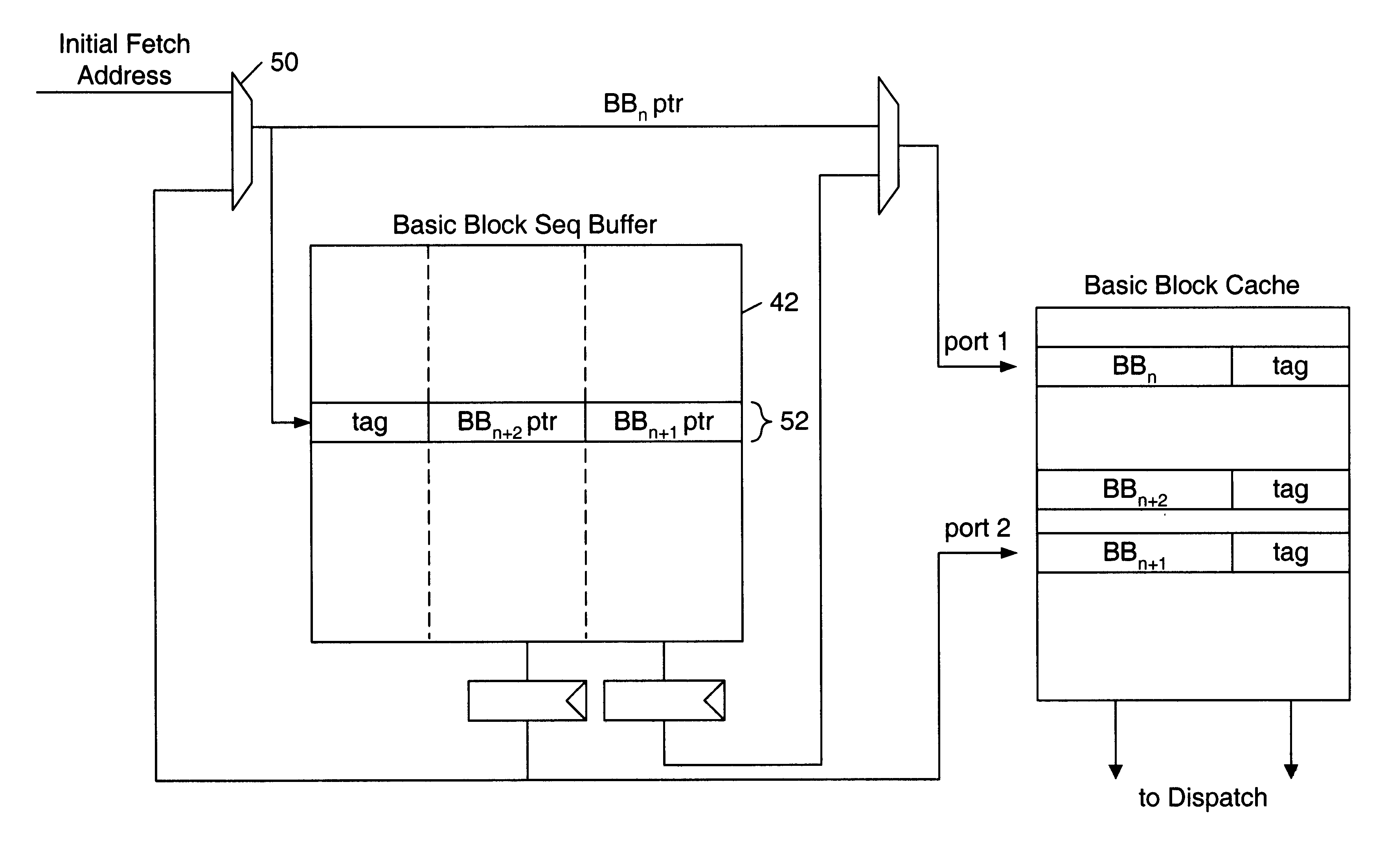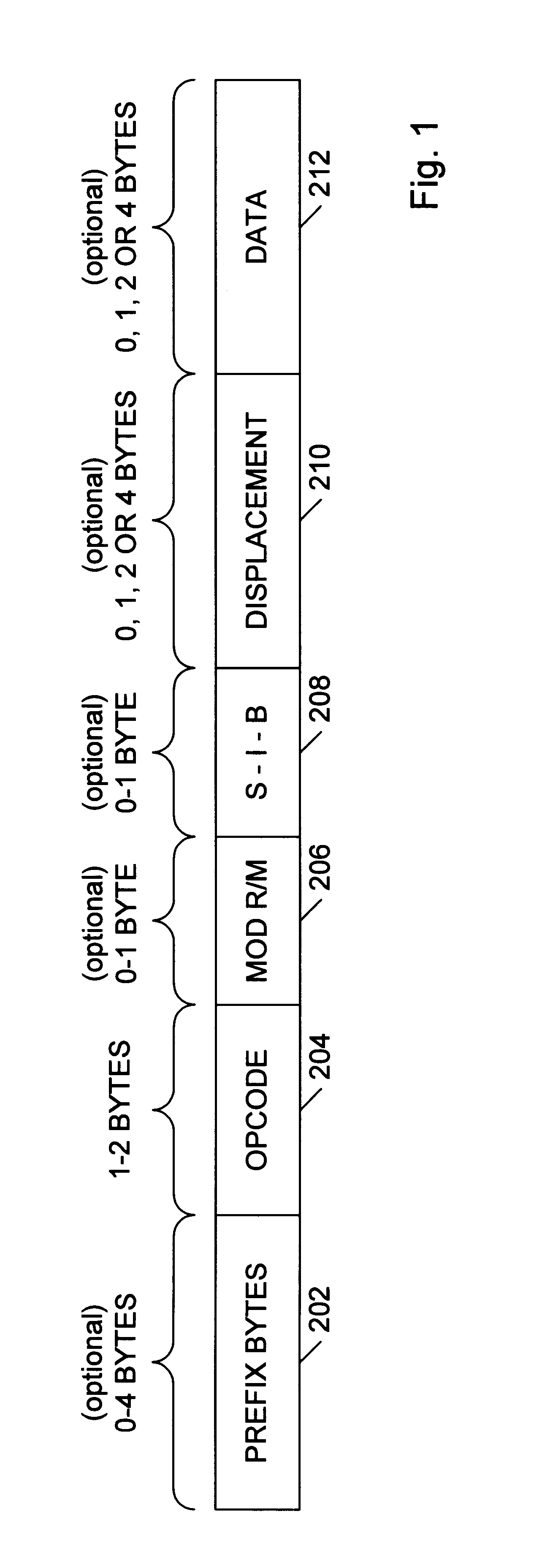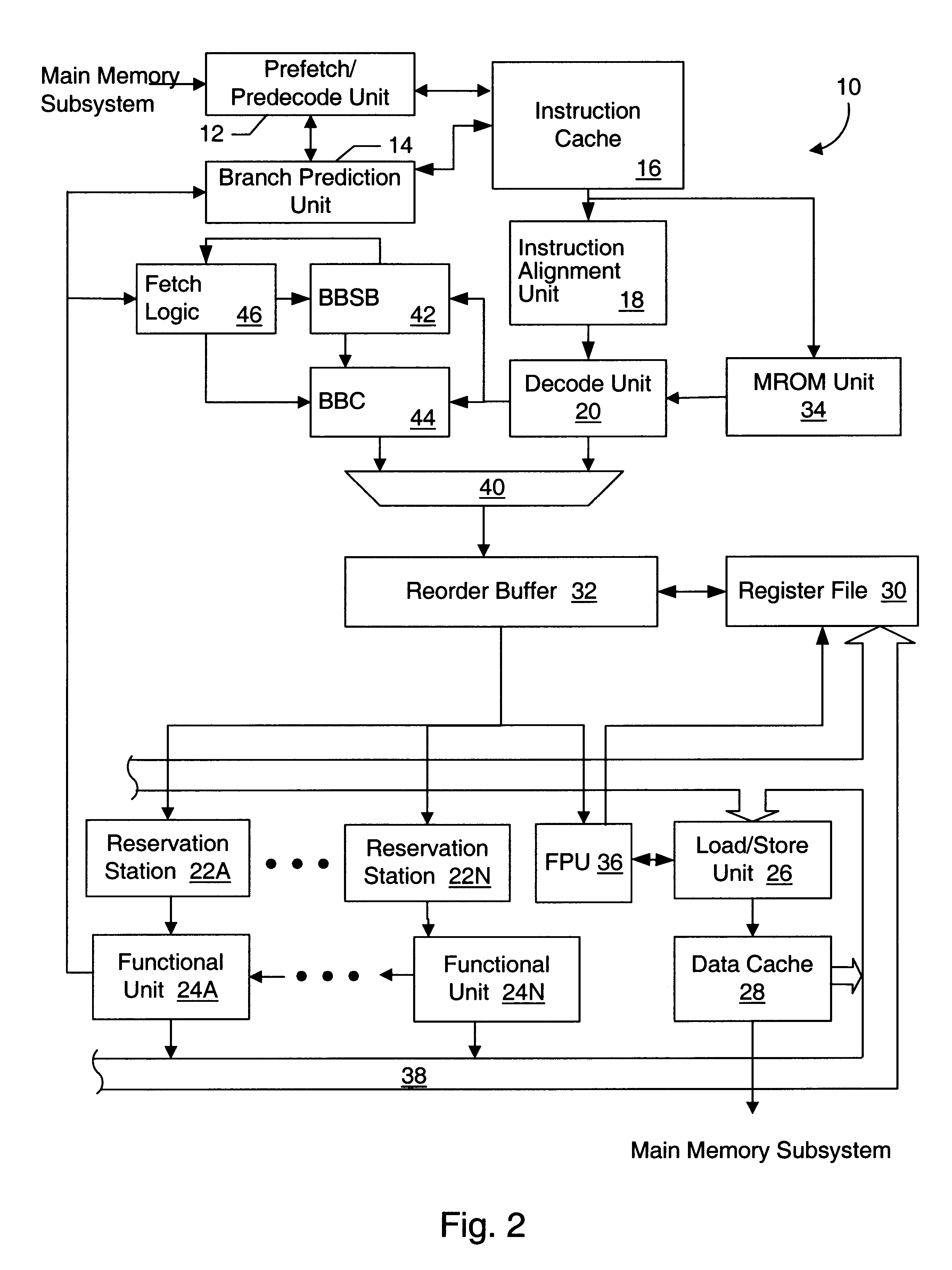Basic block oriented trace cache utilizing a basic block sequence buffer to indicate program order of cached basic blocks
a basic block sequence and cache technology, applied in the field of basic block sequence buffers, can solve the problems of variable length instructions, large complexity of x86 instruction sets, and many difficulties in implementing high-performance x86-compatible superscalars,
- Summary
- Abstract
- Description
- Claims
- Application Information
AI Technical Summary
Problems solved by technology
Method used
Image
Examples
case 1
R<=Basic Block Starting Address
Assuming the invalidation window spans 32 bytes, and BBC 44 has a step size of eight bytes, then four BBC lines (with indexes 0-3) may be covered by the invalidation window. To invalidate all possible combinations of four lines, the INV_ADR is divided into sections.
An example of this division is illustrated in FIG. 19. As the figure illustrates, bits 31-5 may be taken from the INV_ADR, while bits 4-3 may represent the index which is incremented from zero to three, and bits 2-0 may be zero. Using these sections, fetch logic 46 may execute four different invalidations. Bit 31-5 and 2-0 of the invalidation addresses may remain constant while the index is incremented from zero to three. Thus, a line is invalidated if the index selects the line and the UP_TAG matches part of UP_INV_ADR. As mentioned before, the LOW_TAG field need not be used for the comparison. This allows invalidation of basic blocks having LOW_TAG's not equal to zero.
This process also pro...
case 2
R>Basic Block Starting Address
In the event that the basic block starts at an address below the INV_ADR, it may extend into the invalidation window. To address this possibility, these instructions may also be invalidated. In one embodiment this is accomplished by subtracting the maximum basic block length from the INV_ADR as indicated by the following equation: (INV_ADR_LOW)=(INV-ADR)-(Maximum Basic Block Length). The generation of INV_ADR_LOW is illustrated in FIG. 20. INV_ADR_LOW may be used instead of INV_ADR to invalidate the BBC entries. This process may be performed in a similar fashion to that of case one above, except for using INV_ADR_LOW instead of INV_ADR.
Assuming for explanatory purposes that the maximum basic block length 60 bytes long (i.e., 4.times.maximum instruction length=4.times.15 byte=60 bytes), using an index resolution of eight bytes would result in eight invalidation cycles. This may, however, be reduced if the maximum basic block size is limited to a smaller ...
PUM
 Login to View More
Login to View More Abstract
Description
Claims
Application Information
 Login to View More
Login to View More - R&D
- Intellectual Property
- Life Sciences
- Materials
- Tech Scout
- Unparalleled Data Quality
- Higher Quality Content
- 60% Fewer Hallucinations
Browse by: Latest US Patents, China's latest patents, Technical Efficacy Thesaurus, Application Domain, Technology Topic, Popular Technical Reports.
© 2025 PatSnap. All rights reserved.Legal|Privacy policy|Modern Slavery Act Transparency Statement|Sitemap|About US| Contact US: help@patsnap.com



